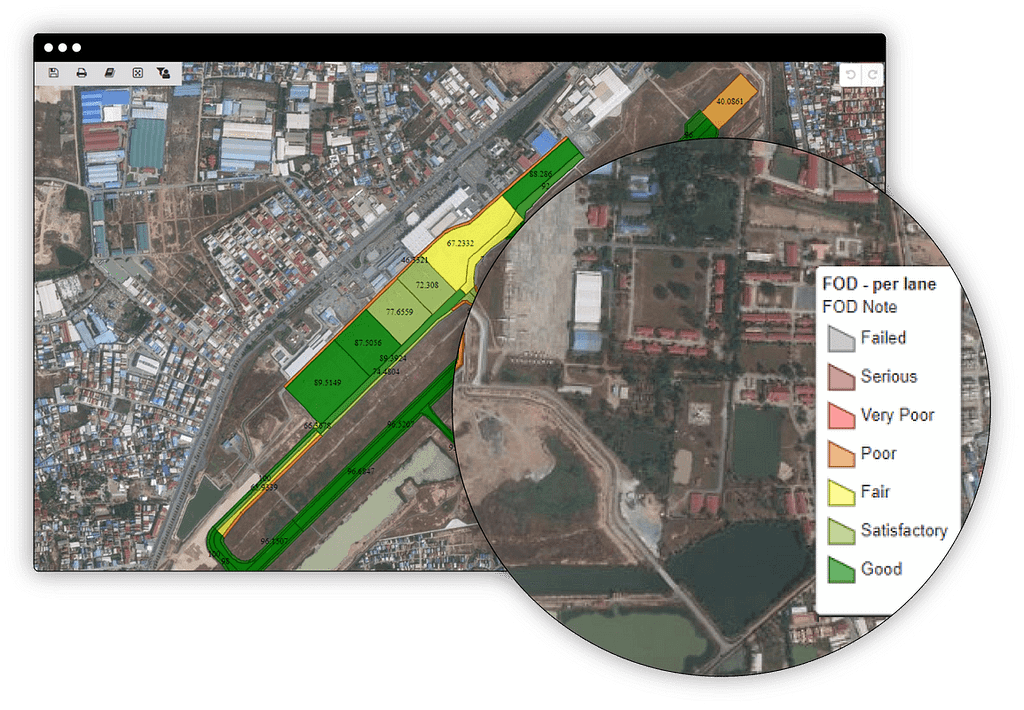A Guide To Airport Asset Management
At the conceptual level, there is little difference between airport and highway pavements management. However, those who have had the experience of working with both know that when examined closely, they are both very different.
For example, while roads are generally examined in a linear fashion, assigning defects according to chainage, the widespread usage of Pavement Condition Index (PCI) demands that concrete airport pavements be examined slab by slab. Furthermore, with many airport pavements being used continuously, day-in-day out often for years between renewal, it is imperative that not only are the pavements designed to an acceptable standard but also that the necessary attention is given to failing sections before they become a concern, especially where safety is compromised.
PARMMS by AgileAssets allows users to view each slab or section individually in both a list form and also on a map level, allowing users to instantly make assumptions of the overall health of a section of pavement at a glance. Users can even import LCMS crack detection data and view individual crack through a map. Work program scenarios can be employed to see how the pavement will deteriorate, as well as determine the optimum work strategies given constraints on time, budget and levels of service.
What to look for when choosing an Asset Management Solution
From advanced analytics and data visualization to intuitive location mapping and mobile capabilities, a great Airport Asset Management Solution is committed to continuously improving its products with the latest technological advancements. Our solution stack is built around a six-star strategy:
• Easy to Use
• Easy to Operate
• Easy to Scale
• Easy to configure
• Easy to Deploy
• Easy to Connect
A common question we receive is “what about all the years of historical data that we already have?”
Our solution handles historical data in two distinct ways. The first is when new clients have existing historical data that they wish to be included in their new pavement management system. When working with clients who already have historical data we can improve the quality of the reporting, deterioration models and accuracy of the projections. Importing historical data into the system is a relatively straightforward process that maps the fields in your current data format into the new system. The second way the system supports historical data is that previous pavement condition and work history can be reviewed by users. This includes historical data imported into the system as indicated above as well as data that has been superseded throughout the lifetime of system operation.
As such you can easily use historical data to compare projected models to past behaviour, as well as for regression analyses in order to obtain the predicted deterioration curves. PARMMS powered by AgileAssets allows users to create optimal work plans using predictive modelling to determine the best time to apply a preventive treatment that keeps your pavement in good repair.
Click on the button below to download a comprehensive guide about PARMMS powered by AgileAssets® for Airports.
Did you know that VINCI Airports has deployed AgileAssets Solution in Six different Countries? Click here to view the case study.

